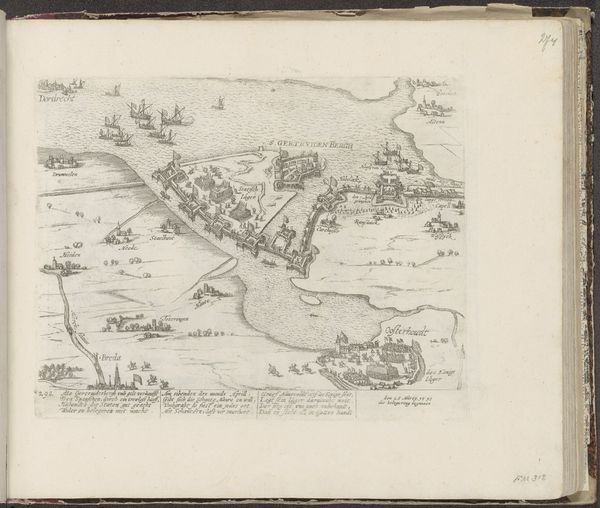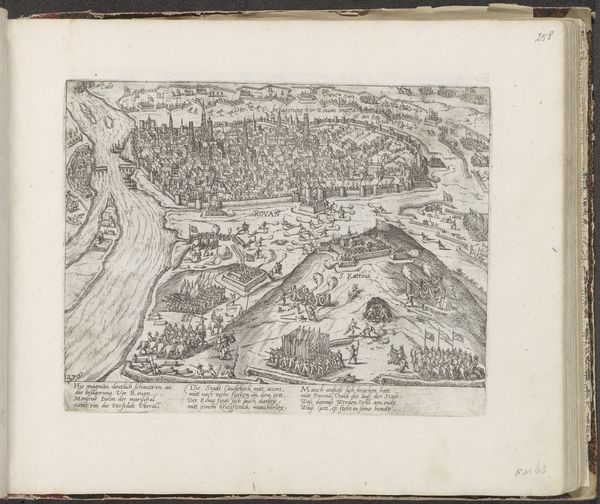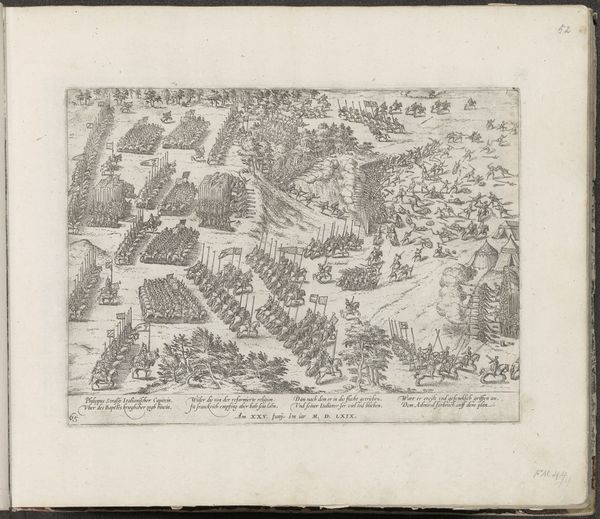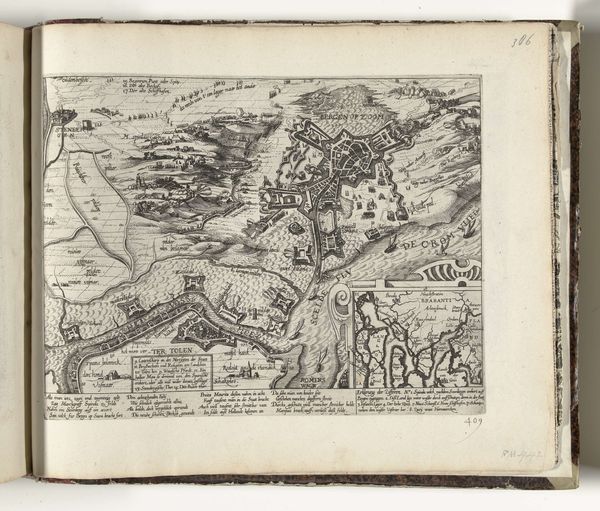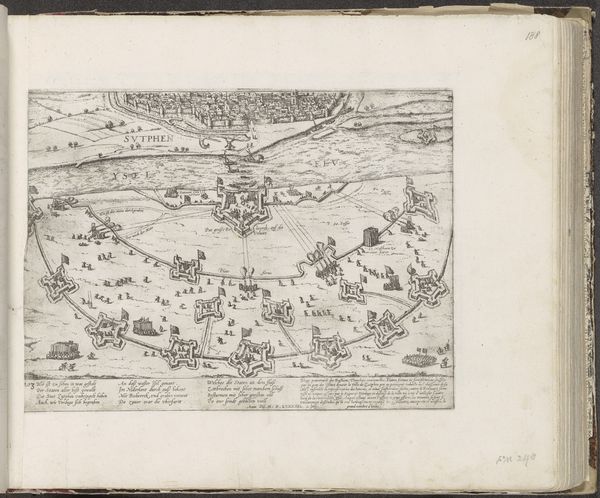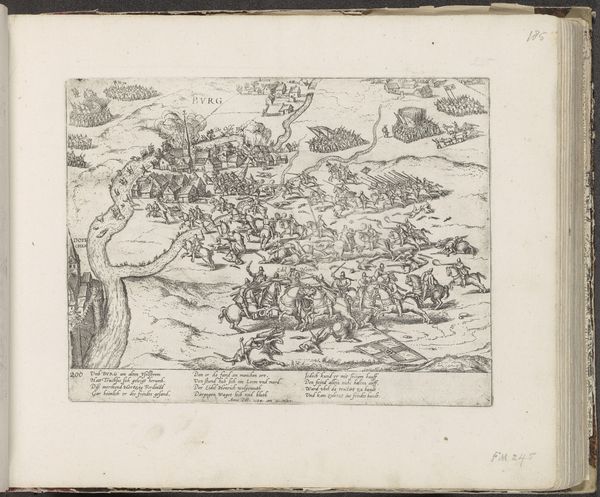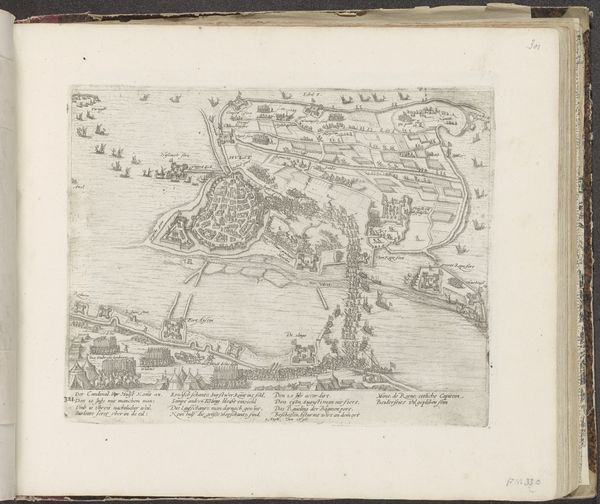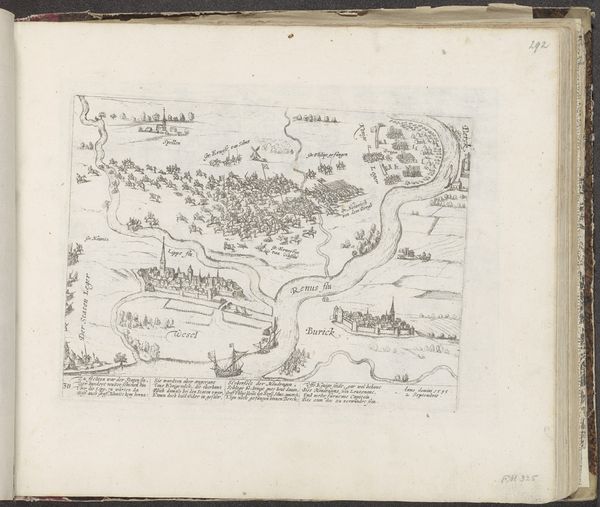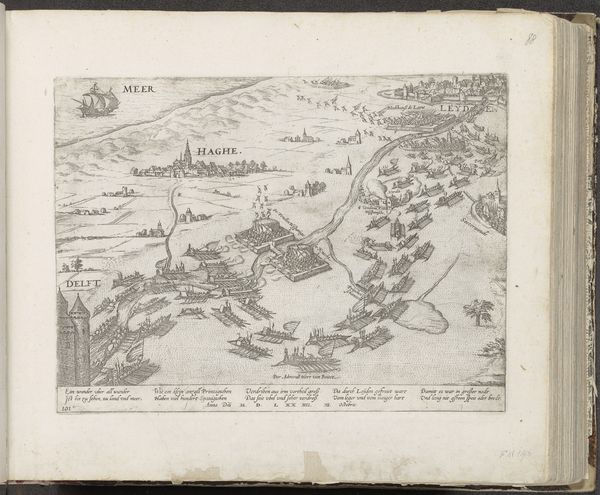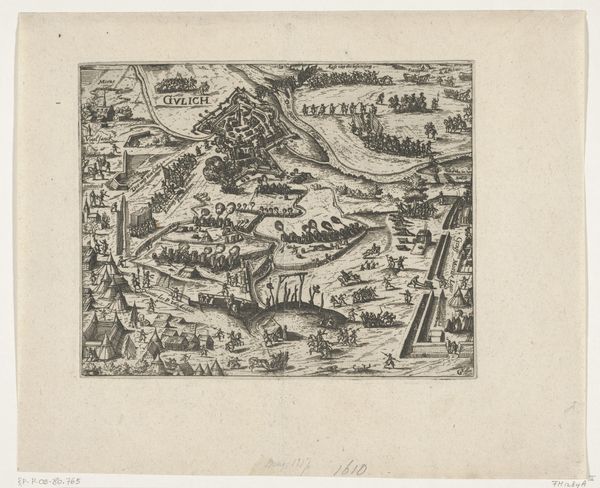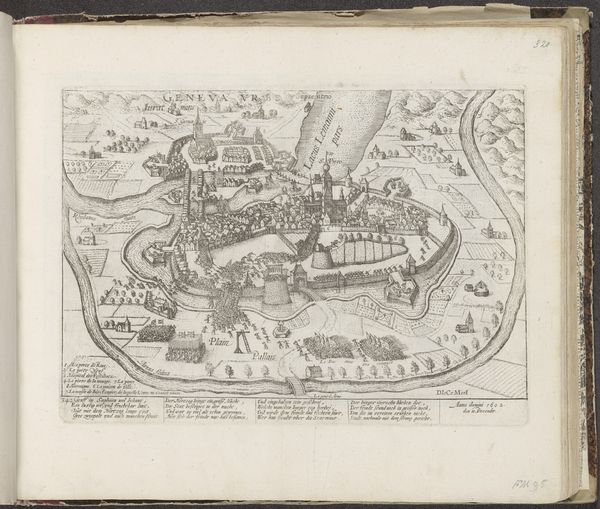
print, engraving
#
dutch-golden-age
# print
#
landscape
#
cityscape
#
engraving
Dimensions: height 211 mm, width 280 mm
Copyright: Rijks Museum: Open Domain
Curator: Let's examine this print titled "Inname van Hulst door Maurits, 1591," or "The Capture of Hulst by Maurice, 1591," created between 1591 and 1593. Editor: My first impression is that it's incredibly detailed. Look at the rendering of those tiny figures and the impressive arrangement of the fleet dominating the foreground. Curator: Indeed. It’s by Frans Hogenberg and showcases the military strategy employed during the capture of Hulst. Hulst's capture held immense strategic importance for the Dutch Republic during the Eighty Years’ War against Spain. Securing Hulst strengthened their control over the Scheldt River. Editor: The composition, though seemingly straightforward, creates a distinct contrast. The sprawling, almost chaotic activity in the water is offset by the measured lines of the fortifications, walls and geography further inland. How does this visual tension serve the print’s overall message? Curator: It's less about aesthetic harmony and more about communicating Dutch military dominance, but the engraving itself tells a story of control. It served as propaganda, illustrating the triumph of the Dutch forces under Prince Maurice during a critical period. Editor: Propaganda it may be, but technically the lines are incredibly crisp, and the level of detail for an engraving is astounding. Consider how each individual boat, wave, and rooftop adds to the overall texture. I also find the ordering to be satisfying in a compositional sense, with receding depth pushing toward the center. Curator: I agree about Hogenberg's skills. The visual power of such images shouldn’t be understated, considering the limitations and relative costs of printmaking in that era. Editor: Precisely! And consider the print as an object: its lines, values and scale contribute a compelling narrative about siege warfare in the early modern era. It becomes more than just reportage of the facts. Curator: Seeing its impact then highlights the value of understanding an artwork in terms of its contemporary role, not just as a singular creation. It becomes a symbol of Dutch ambition, and, depending on perspective, even Dutch resistance. Editor: That intersection between material object, process, and meaning...it deepens one’s engagement with an artwork beyond the purely visual, allowing access into its historic presence.
Comments
No comments
Be the first to comment and join the conversation on the ultimate creative platform.
